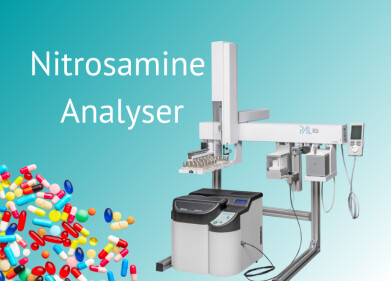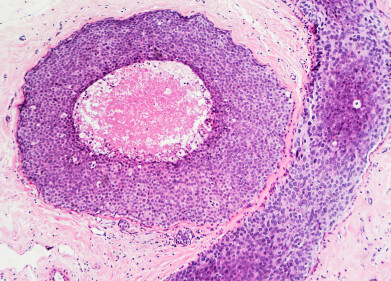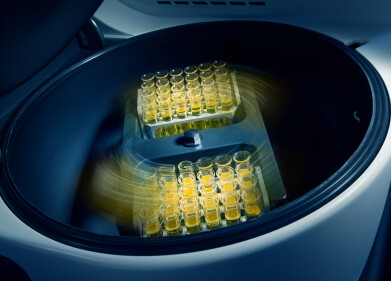Laboratory Products
Automated Rheology at Procter & Gamble: Making Complex Analyses Routine
Apr 21 2012
Ariel, Dawn, Downy, Gain, and Tide: These are some of the billion-dollar brands produced by Procter & Gamble in the
field of household care. To keep these products in the list of the most popular detergent brands, Procter & Gamble
employs teams of researchers at its Brussels Innovation Center (BIC) in Belgium. At BIC, the work of measuring,
analysing and interpreting physical parameters is frequently undertaken by the aptly named ‘Measure Group’, headed
by Dr Walter Broeckx.
Validation is key
Rheological tests on samples by the Measure Group are used to interpret the behaviour of the product and make
predictions about its physical parameters. Models are built and changes to formulations and processes are made based on these models. As Dr Broeckx explains: “You want to have a measurement so that you can make a lot of products, test them quickly and say based on a measurement: ‘This one will be stable, this one will not be stable, this one might be stable.’ Then you go and test the ones you believe will succeed. The problem is that you also have to create the reassurance, you have to be sure that the number the rheometer generates really reflects the physical parameter. If not, you are going to discard maybe very good technologies without having a good reason for doing so."
The power of building good models
To deliver this reassurance, Dr Broeckx relies on thorough validation of the models the Measure Group uses. “For me the power of building good models lies in doing rheological tests on more samples,” he explains. “However, validating rheological procedures really takes a lot of time. If I do rheological tests on three samples in the lab it just kills half my day.”
“It was the time-consuming aspect of rheology that bothered me the most,” remembers Dr Broeckx. For this reason, in
the 1990s Dr Broeckx began to consider a more automated approach. By chance he learnt about the Automatic Sample Changer ASC 32 from Anton Paar, a rheometer with a sample changer which automatically measures and cleans 32 samples in one cycle.
“Suddenly we could do a lot of measurements.”
“Buying the ASC 32 was a huge step forward because suddenly we could do a lot of measurements,” remembers Dr
Broeckx. Two ASC 32 rheometers are still at work in his laboratory, busily running through thirty-two samples while lab
staff analyse the results of previous samples on the PC. However, Dr Broeckx was keen for more automation. When he heard of a solution with the possibility of running 96 samples, he was very interested. Soon a ‘HTR’, a High-throughput Rheometer, was purchased for the Measure Group and installed in the summer of 2010.
The new rheometer system is a fusion of rheometer and robot inside a closed cabin. The robot arm in the middle
dominates the setup. Once loaded with samples, the robot arm swings between the sample magazine, the rheometer and the cleaning unit. Two measuring systems are used simultaneously: as one is in the rheometer, the other is being cleaned. Liquid samples, such as Dr Broeckx's liquid detergent, are poured into sample vials by laboratory assistant Annelies Verbesselt before starting the operation.
As Dr Broeckx recalls, “The HTR goes one large step further than the ASC: Not only for the number of samples but also
the flexibility becomes wider. You can do temperature sweeps easily. It more reflects what you do in reality. The robot
just replaces the person.”
“A valuable piece of kit”
The idea behind the technology is that the HTR also works overnight, running tests on 96 samples which are then
completed when laboratory staff arrive in the morning. Dr Broeckx aims to use the machine at its highest capacity: “It
runs 24 hours a day, or close to 24 hours. And seven days a week. We fill it completely and analyse, analyse.”
The arrival of the High Throughput Rheometer has changed the speed at which samples can be analysed, allowing
thorough validation of the models used and building in the reassurance that these models are delivering useful results. Besides this, Dr Broeckx uses the HTR to run more complex analyses on his samples: “I love the fact that it opens more possibilities in the number of samples and that it has a huge flexibility in the procedures you can use, and so on. But as a researcher, it is also the possibilities, mainly the possibilities regarding temperature that I love. You can go to minus 5°C easily – It’s beautiful. You can look at and probe rheology and you can do that in an automated way. So you can build even more complex analyses and make them routine.”
For more information on Procter & Gamble, see www.pg.com
For more information on the High Throughput Rheometer, see www.anton-paar.com
Digital Edition
Lab Asia 31.6 Dec 2024
December 2024
Chromatography Articles - Sustainable chromatography: Embracing software for greener methods Mass Spectrometry & Spectroscopy Articles - Solving industry challenges for phosphorus containi...
View all digital editions
Events
Jan 22 2025 Tokyo, Japan
Jan 22 2025 Birmingham, UK
Jan 25 2025 San Diego, CA, USA
Jan 27 2025 Dubai, UAE
Jan 29 2025 Tokyo, Japan


.jpg)

















